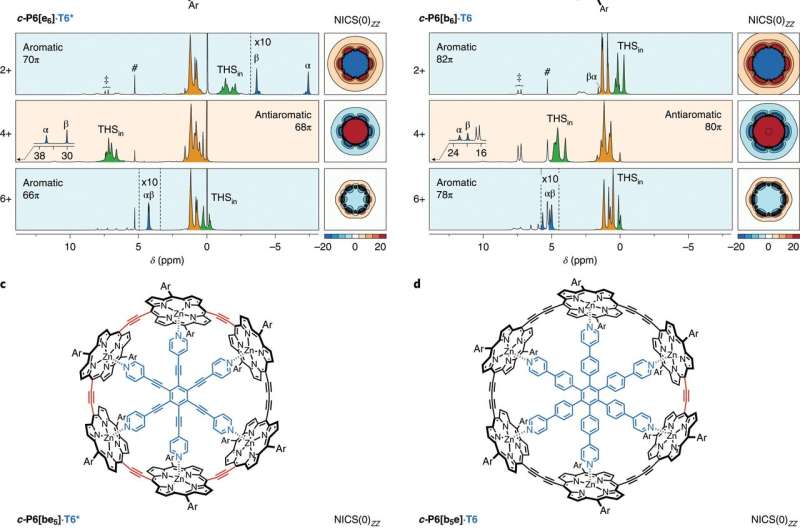January 30, 2020 report
Largest aromatic ring size record broken with 162 π electrons

A team of researchers at Oxford University has broken the record for the largest aromatic molecule ring size ever synthesized with a ring that has 162 π electrons. In their paper published in the journal Nature Chemistry, the group describes how they created their ring and possible applications.
In chemistry, an aromatic ring does not refer to the way a molecule smells; instead, it is a molecule with special stability characteristics and properties due to its closed loop of electrons. They form in shapes that are reminiscent of bicycle tires. Back in 1931, physicist Erich Hückel devised a theory of molecular orbitals and part of that was finding that rings with alternating double and single bonds that had 4n+2 π electrons were likely to be aromatic. Since Hückel's time, a large number of aromatic rings of various sizes have been created—but his work did not define a size limit for such molecules. Because of that, chemists have been creating ever-larger rings. Several years ago, a group at Oxford created the largest one ever—it had 78 π electrons. In this new effort, the researchers have more than doubled that size by creating a ring with 162 π electrons.
To make the ring, the researchers first created a series of smaller rings made in part with zinc porphyrins. The team used alkynes and template molecules to force them into a ring pattern. Then they began removing electrons until they had the number specified by Hückel's formula. The result was an outer ring made up of 12 smaller porphyrin rings connected with alkynes. In the center of the ring was a double-stacked benzene hub with 12 spokes connecting it to the outer ring. Continuing their work, the researchers created eight shapes in multiple oxidation states. But it is still not known if the new ring is the limit size for aromatic molecules, or if even larger rings can be created. The team plans to continue their work to find out. Meanwhile, others are already using the results to see if such large ring molecules have quantum computing applications.
More information: Michel Rickhaus et al. Global aromaticity at the nanoscale, Nature Chemistry (2020). DOI: 10.1038/s41557-019-0398-3
Journal information: Nature Chemistry
© 2020 Science X Network



















